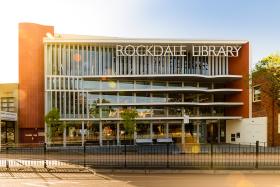Tools: Library location
Location of a public library should be based on the needs of the community.
Choosing a site for a public library
The process of siting a new/extended public library needs to address a series of key criteria which are essential to the successful location of a public library. The library needs to be accessible to a broad range of users.
Factors such as high visibility, location in a main shopping area and potential for expansion are key. In many communities, local councils are looking at the value of retaining major public infrastructure to attract shoppers and visitors in city centres. Equally, private developers are often interested in accommodating a public library in a new shopping centre development as it attracts large volumes of visitors who may also shop after visiting the library.
The general location of a new/extended library is very much based on the needs of the community. A needs assessment should be undertaken to determine where the new/extended library is required and what type of services will meet the community's needs. Issues of resident and non resident characteristics; population growth projections; shopping and recreation patterns; location of schools and higher education facilities; transport patterns; and future developments are some of the factors that may be considered as part of this analysis.
Following this analysis, a broad area or suburb will be identified in which a new/expanded library is required. From this base, several sites may be chosen and assessed in terms of their suitability. People Places recommends that, as a minimum, all of the following 12 locational criteria be considered in determining the most appropriate site for a public library.
Site criteria for a public library
- Main street or shopping area location
- Highly visible location particularly from the shopping area
- Street frontage with library on ground floor and not hidden from the road by trees or another building
- High level of personal and property safety as outlined in Safer by Design requirements
- Fully accessible for people with limited mobility
- Close to and/or accessible from local schools and educational facilities
- Potential for an outdoor area to be attached to the library
- Priority pedestrian access which is safe and attractive, particularly for older residents, children and parents with prams
- Walking distance from public transport which is typically 400–500 metres with minimal gradient
- Access to convenient and safe car parking with priority for people with a disability, older residents, parents with prams, staff and night-time users
- Accessible for community buses, mobile libraries, deliveries and other vehicles
- Site able to accommodate future expansion of the library if required.
Choosing a site can be a difficult or contentious issue. It may be appropriate to engage an independent consultant to undertake an assessment of potential sites, facilitate the process and prepare reports.

Locational matrix
The locational matrix template is a starting point to evaluate specific library sites.
The matrix provides example criteria and weighting to indicate importance in comparison with other criteria. Add other locational criteria specific to your community, e.g. not on flood prone land, within the cultural precinct, etc.
Give a score of between 1 and 3 for how well each site meets the criteria. Criteria may be weighted between 1 and 3 depending on their importance. For example, in a particular community, a location with adequate parking is more important than one central to the shopping precinct. As shown in the table, parking is given a weighting of 3 points while shopping precinct location has a weighting of 1 point. Site A, which has ample on-site parking would receive 9 points (i.e. 3 for its criteria weighting and 3 for the site score or 3 x 3 = 9). Site B, located right in the shopping centre, would receive 3 points (i.e. 1 for its criteria weighting and 3 for its site score or 3 x 1 = 3).
Fictional site locations and scores have been developed as an example of how to use a locational matrix to assist in the site selection process. Using this methodology, the site with the highest total score is the most suitable for a public library. In this example; Site A is on a side street in a shopping centre, Site B is located right on the main street and Site C is behind the council administration building.